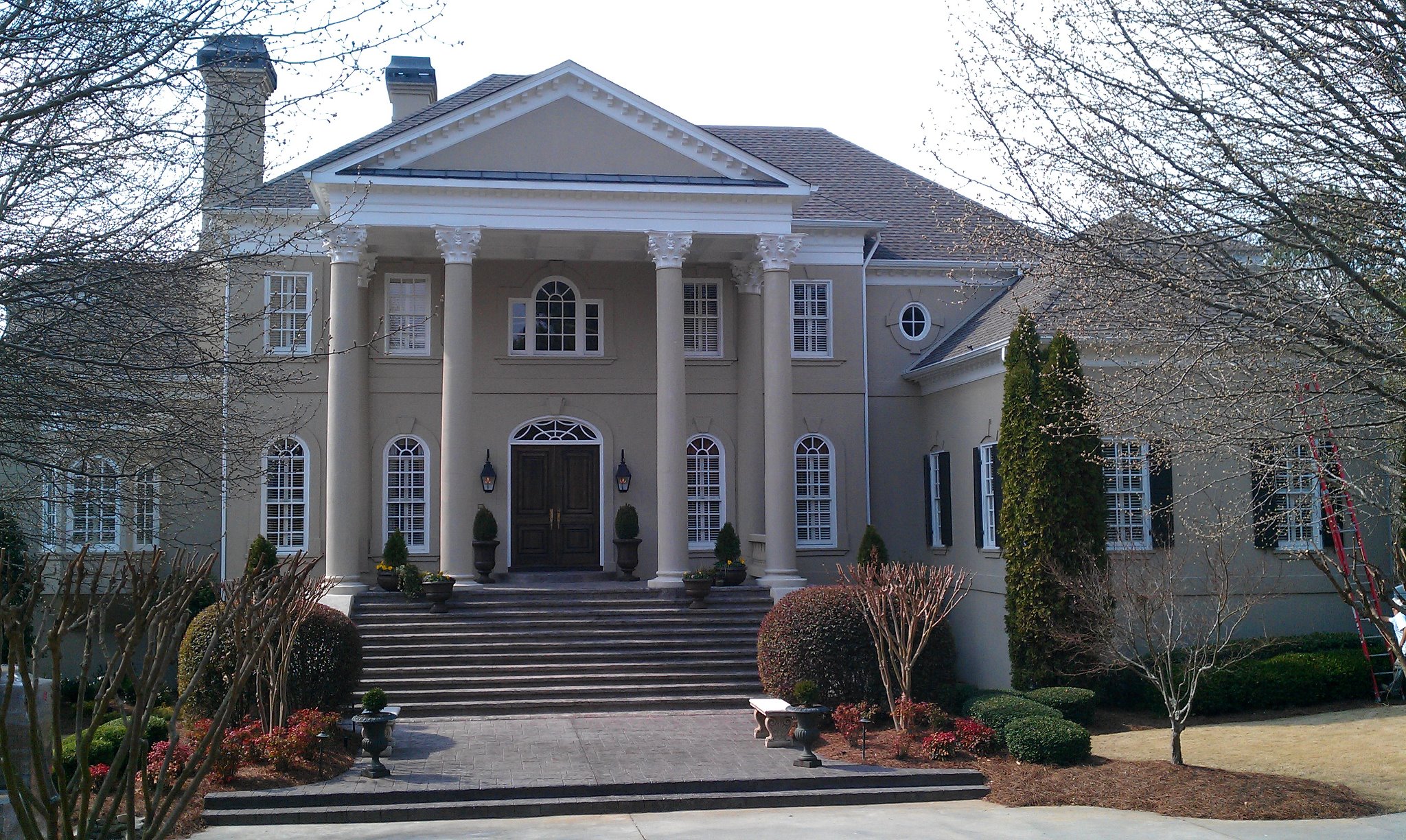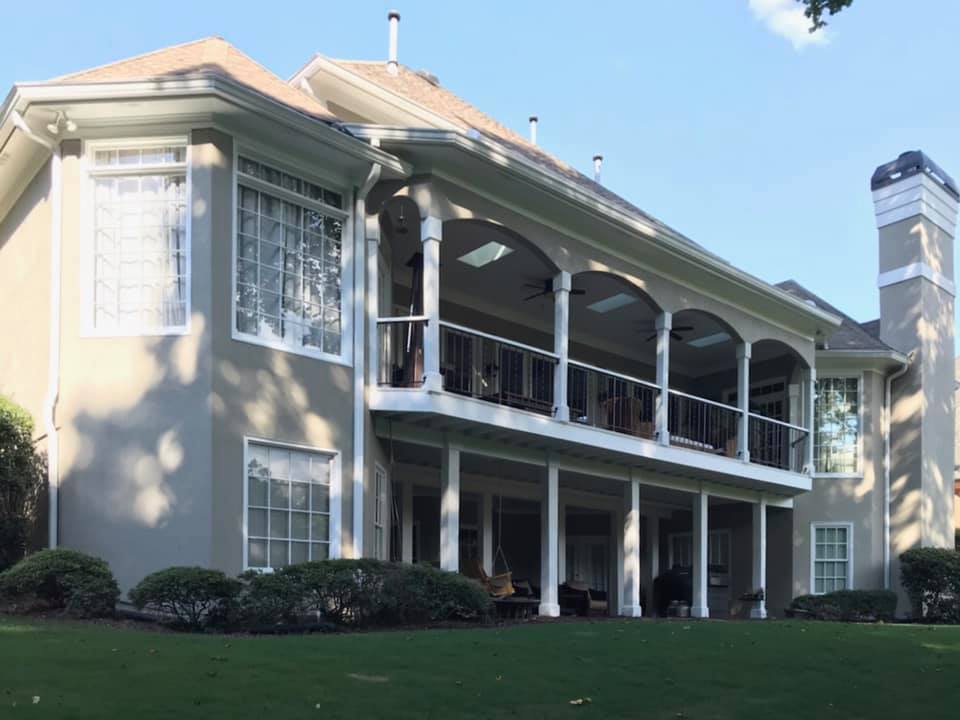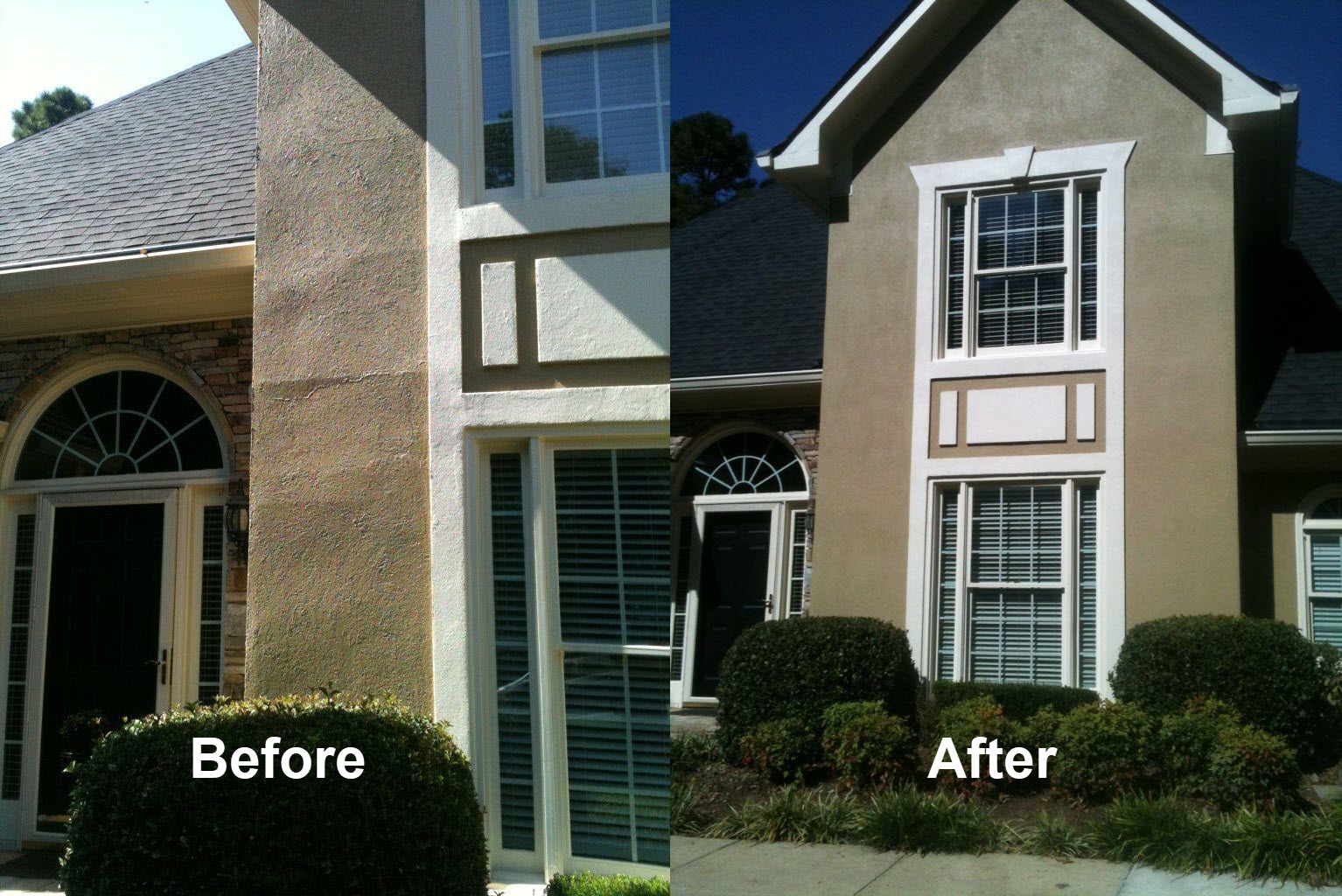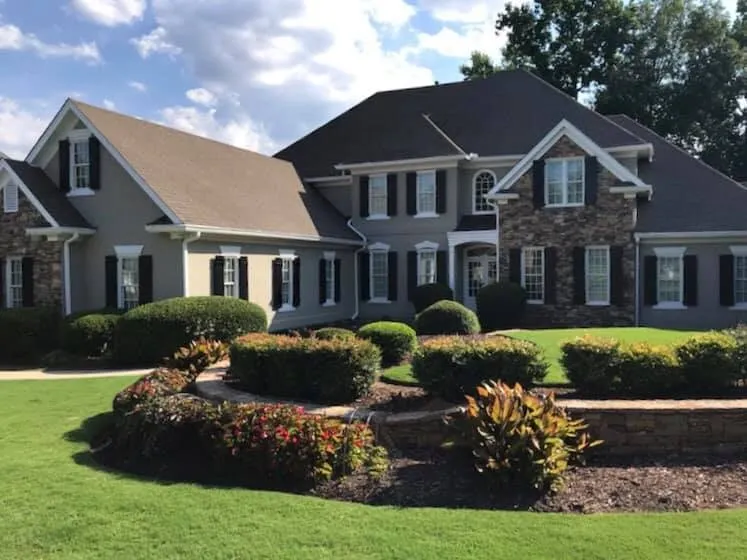Stucco Contractorin Marietta GA
Professional Stucco Contractors You Can Rely On
We Are Locally Owned & Operated For Over 24 Years
We Serve Businesses In And Around The Following Cities:
About Stucco Contractors in Marietta, Georgia
Advanced Stucco Repair Services: Installation and Repair of Stucco, EIFS, and Dryvit in Marietta, Georgia
Understanding the Art of Stucco Installation and Repair
In the realm of modern construction, stucco holds a prominent place, appreciated for both its aesthetic appeal and practical benefits. But understanding stucco involves more than acknowledging its beauty; it requires a deep dive into its application, benefits, and suitability for both residential and commercial properties. In Marietta, Georgia, where architectural styles range from classic Southern charm to modern minimalism, Advanced Stucco Repair emerges as a frontrunner in providing expert stucco contractor services. The city's diverse architectural landscape calls for versatility in materials and techniques, a demand that Advanced Stucco Repair meets with expertise and precision.
Stucco, by definition, is a mixture of aggregates, a binder, and water, applied wet and hardens to a dense solid. It is traditionally used as an external finish, giving buildings a seamless and polished look. The technique of stucco application is an art form in itself, often requiring experienced artisans to achieve the delicate balance between durability and aesthetic appeal. Whether it's the traditional three-coat stucco application or the modern one-coat systems, each has its own set of complexities that professional stucco contractors navigate expertly.
The Significance of EIFS and Dryvit Systems in Construction
Beyond traditional stucco, External Insulation and Finish Systems (EIFS) and Dryvit offer advanced alternatives that carry distinct advantages. EIFS, a multi-layered exterior finish, not only enhances thermal performance but also contributes to moisture resistance. Similarly, Dryvit systems, renowned for their innovation, offer enhanced flexibility and decorative appeal. In the humid climate of Marietta, Georgia, the need for effective insulation to control humidity and temperature fluctuations is paramount; EIFS and Dryvit provide this essential service. They also contribute substantially to energy efficiency, an increasingly pressing concern for both residential and commercial buildings.
These systems consist of various layers, including a water-resistive barrier, insulation board, a reinforcing mesh embedded in base coat, and a finish coat. Each layer plays a critical role in providing thermal insulation, durability, and aesthetic finish, making EIFS an attractive choice for property owners concerned about long-term sustainability and energy savings. The understanding of these systems—and the skilled hands required for their correct installation and maintenance—are what make companies like Advanced Stucco Repair particularly valuable.
Advantages of Stucco and Its Application in Marietta
The benefits of choosing stucco, EIFS, and Dryvit systems are numerous, ranging from aesthetic appeal to practical functionality. The first and most visible benefit is the enhanced architecture it offers. Stucco works well with a variety of designs, from the historical to contemporary, capable of being molded and colored to perfectly complement any structure’s aesthetic. This flexibility in design is one reason why stucco-related products remain popular among homeowners and business owners in Marietta looking to enhance their property’s curb appeal.
Moreover, stucco is renowned for its durability. Resistance to weathering, fire, and impact makes it a long-lasting choice, essential for withstanding Georgia’s sometimes turbulent climatic conditions. By opting for stucco and advanced systems like EIFS and Dryvit, property owners invest in surfaces that promise longevity and reduced maintenance costs. Advanced Stucco Repair, with their profound understanding of the materials and climate sensitivity, assures an application that maximizes these benefits.
Additionally, stucco provides excellent insulation. Particularly with EIFS and Dryvit, the installation promotes energy efficiency—a critical consideration in today’s eco-conscious world. In the context of Marietta, energy-efficient options not only contribute to individual property savings but also play a role in reducing the overall environmental impact in the community, aligning with broader sustainability goals.
Expert Process of Stucco Application and Repair
Achieving these benefits, however, depends significantly on the expertise of the chosen contractors. Advanced Stucco Repair distinguishes itself through its systematic approach and commitment to quality, showcasing its comprehensive services from initial consultation through to project completion. The process begins with a meticulous site evaluation to understand the particularities of the project at hand. Factors like existing surface conditions, structural features, and client expectations are considered to develop a tailored plan that ensures optimal results.
The installation process involves several critical stages, each demanding high precision and skill. Surface preparation is a fundamental initial step to ensure proper adhesion, traditionally involving cleaning, repairing underlying damages, and sometimes applying a primer. Following preparation, the actual application of stucco, EIFS, or Dryvit layers requires precision workmanship to achieve uniformity and sturdiness. Advanced Stucco Repair’s team excels in managing these complex layers to prevent future complications such as moisture infiltration or cracking.
Moreover, the repair of existing stucco surfaces is a pivotal service offered by Advanced Stucco Repair, crucial for maintaining the integrity and appearance of properties. Repairs often involve assessing damaged areas, addressing foundational weaknesses, and seamlessly blending old and new surfaces. The company utilizes state-of-the-art materials and techniques to ensure repairs are not only durable but also aesthetically pleasing, thereby maintaining the structure’s value and charm.
Real-World Applications and Benefits in Commercial and Residential Properties
Advanced Stucco Repair’s expertise sits at the intersection of tradition and innovation, allowing them to service a wide range of properties. For residential properties in Marietta, where family homes stand as legacies, maintaining outward appearance with high-quality stucco work ensures not only personal satisfaction but also enhances property value. A beautifully crafted stucco facade reflects on the homeowner, adding a layer of pride and satisfaction that comes with maintaining a well-kept residence.
In commercial settings, Advanced Stucco Repair excels in providing attractive facades that capture attention within competitive business landscapes. Businesses in Marietta can benefit from their services by enhancing brand image and drawing customers through professionally outfitted exteriors. The ability to customize colors and textures means businesses can tailor their aesthetic to align with their brand identity, a marketing aspect often underestimated.
Furthermore, the use of EIFS and Dryvit in both sectors supports energy efficiency goals, a financial advantage for businesses aiming to reduce operational costs over time. These systems lack the weight and bulk of traditional stucco while maintaining, if not surpassing, the insulating properties, making them ideal for commercial buildings where footprint efficiency is paramount.
Subtle Recommendations for Choosing Advanced Stucco Repair
Choosing a contractor like Advanced Stucco Repair not only ensures superior quality but also brings peace of mind knowing your project is in expert hands. Their track record in Marietta speaks for itself, with numerous satisfied clients attesting to their professionalism and expertise. By selecting a local expert who understands Marietta’s unique architectural and environmental needs, property owners stand to maximize their investment by achieving results that are both beautiful and durable.
Advanced Stucco Repair’s comprehensive services provide a seamless experience from start to finish. Whether installing new stucco systems or carrying out meticulous repairs, their dedication to excellence ensures every project aligns perfectly with client visions and practical requirements. This commitment to superior craftsmanship and customer satisfaction makes them a preferred choice among Marietta’s property owners.
In summary, stucco, EIFS, and Dryvit are not just building materials; they are powerful tools for enhancing and protecting our living and working spaces. Advanced Stucco Repair, with its detailed understanding and skilled execution, transforms these materials into long-term investments that every property owner in Marietta, Georgia, can appreciate. By entrusting your project to a local expert, you not only safeguard your property’s future but also contribute positively to the aesthetic and environmental landscape of your community.
Stucco Contractors Gallery



Call Us Today to receive your Free Quote for
Stucco Contractor in Marietta
Serving: Marietta, Georgia

About Marietta, Georgia
The origin of the name is uncertain. It is believed that the city was named for Mary Cobb, the wife of the U.S. Senator and Superior Court judge Thomas Willis Cobb. The county is named for Cobb.
Homes were built by early settlers near the Cherokee town of Big Shanty (now Kennesaw) before 1824. The first plot was laid out in 1833. Like most towns, Marietta had a square (Marietta Square) in the center with a courthouse. The Georgia General Assembly legally recognized the community on December 19, 1834.
Built in 1838, Oakton House is the oldest continuously occupied residence in Marietta. The original barn, milk house, smokehouse and well house remain on the property. The gardens contain the boxwood parterre from the 1870s. Oakton was Major General Loring's headquarters during the Battle of Kennesaw Mountain in 1864.
Marietta was initially selected as the hub for the new Western and Atlantic Railroad and business boomed. By 1838, roadbed and trestles had been built north of the city. In 1840, political wrangling stopped construction for a time and, in 1842, the railroad's new management moved the hub from Marietta to an area that became Atlanta. In 1850, when the railroad began operation, Marietta shared in the resulting prosperity.
The businessman and politician John Glover arrived in 1848. A popular figure, Glover was elected mayor when the city incorporated in 1852. Another early resident was Carey Cox, a physician, who promoted a "water cure" that attracted tourists to the area. The Cobb County Medical Society recognizes him as the county's first physician.
The Georgia Military Institute was built in 1851 and the first bank opened in 1855. During the 1850s, fire destroyed much of the city on three separate occasions.
By the time the Civil War began in 1861, Marietta had recovered from the fires.
In April 1862, James Andrews, a civilian working with the Union Army, came to Marietta, along with a small party of Union soldiers dressed in civilian clothing. The group spent the night in the Fletcher House hotel (later known as the Kennesaw House and now the home of the Marietta Museum of History) located immediately in front of the Western and Atlantic Railroad. Andrews and his men, who later became known as the Raiders, planned to seize a train and proceed north toward the city of Chattanooga, destroying the railroad on their way. They hoped, in so doing, to isolate Chattanooga from Atlanta and bring about the downfall of the Confederate stronghold. The Raiders boarded a waiting train on the morning of April 12, 1862, along with other passengers. Shortly after, the train made a scheduled stop in the town of Big Shanty, now known as Kennesaw. When the other passengers alighted for breakfast, Andrews and the Raiders stole the engine and the car behind it, which carried the fuel. The engine, called The General, and Andrews' Raiders had begun the episode now known as the Great Locomotive Chase. Andrews and the Raiders failed in their mission. He and all of his men were caught within two weeks, including two men who had arrived late and missed the hijacking. All were tried as spies, convicted and hanged.
General William Tecumseh Sherman invaded the town during the Atlanta Campaign in summer 1864. In November 1864, General Hugh Kilpatrick set the town ablaze, the first strike in Sherman's March to the Sea. Sherman's troops crossed the Chattahoochee River at a shallow section known as the Palisades, after burning the Marietta Paper Mills near the mouth of Sope Creek.
The Marietta Confederate Cemetery, with the graves of over 3,000 Confederate soldiers killed during the Battle of Atlanta, is located in the city.
In 1892, the city established a public school system. It included a Marietta High School and Waterman Street School for white students. A school for black students was also created on Lemon Street. The state of Georgia did not provide a high school for black students until 1924 when Booker T. Washington High School (Georgia) opened in Atlanta, after decades of black citizens requesting educational resources.
Leo Frank was lynched at 1200 Roswell Road just east of Marietta on August 17, 1915. Frank, a Jewish-American superintendent of the National Pencil Company in Atlanta, had been convicted on August 25, 1913, of the murder of one of his factory workers, 13-year-old Mary Phagan. The murder and trial, sensationalized in the local press, portrayed Frank as sexually depraved and captured the public's attention. An eleventh-hour commutation by Governor John Slaton of Frank's death sentence to life imprisonment because of problems with the case against him created great local outrage. A mob threatened the governor to the extent that the Georgia National Guard had to be called to defend him and he left the state immediately with his political career over. Another mob, systematically organized for the purpose, abducted Frank from prison, drove him to Marietta and hanged him. The leaders of the abduction included past, current and future elected local, county and state officials. There were two state legislators, the mayor, a former governor, a clergyman, two former Superior Court justices and an ex-sheriff. In reaction, Jewish activists created the Anti-Defamation League, to work to educate Americans about Jewish life and culture and to prevent anti-Semitism.
The Big Chicken was constructed in Marietta in 1963.
In 1963, Atherton's Drugstore, a store on Marietta Square, exploded on Halloween night, killing 6 people and injuring 23 others.
Located near the center of Cobb County, between Kennesaw to the northwest and Smyrna to the southeast. U.S. Route 41 and State Route 3 run through the city northeast of downtown as Cobb Parkway, and Interstate 75 runs parallel to it through the eastern part of Marietta, with access from exits 261, 263, 265, and 267. Downtown Atlanta is 20 miles (32 km) to the southeast, and Cartersville is 24 miles (39 km) to the northwest.
According to the United States Census Bureau, Marietta has a total area of 23.2 square miles (60.0 km), of which 23.1 square miles (59.8 km) is land and 0.077 square miles (0.2 km), or 0.38%, is water.
Marietta has a humid subtropical climate (Köppen climate classification Cfa).
Marietta falls under the USDA 7b Plant Hardiness zone.
| Census | Pop. | Note | %± |
|---|---|---|---|
| 1870 | 1,888 | — | |
| 1880 | 2,227 | 18.0% | |
| 1890 | 3,384 | 52.0% | |
| 1900 | 4,446 | 31.4% | |
| 1910 | 5,949 | 33.8% | |
| 1920 | 6,190 | 4.1% | |
| 1930 | 7,638 | 23.4% | |
| 1940 | 8,667 | 13.5% | |
| 1950 | 20,687 | 138.7% | |
| 1960 | 25,565 | 23.6% | |
| 1970 | 27,216 | 6.5% | |
| 1980 | 30,805 | 13.2% | |
| 1990 | 44,129 | 43.3% | |
| 2000 | 58,748 | 33.1% | |
| 2010 | 56,579 | −3.7% | |
| 2020 | 60,972 | 7.8% | |
| U.S. Decennial Census 1850-1870 1870-1880 1890-1910 1920-1930 1940 1950 1960 1970 1980 1990 2000 2010 | |||
| Race | Num. | Perc. |
|---|---|---|
| White (non-Hispanic) | 25,610 | 42.0% |
| Black or African American (non-Hispanic) | 17,564 | 28.81% |
| Native American | 135 | 0.22% |
| Asian | 1,765 | 2.89% |
| Pacific Islander | 35 | 0.06% |
| Other/Mixed | 3,335 | 5.47% |
| Hispanic or Latino | 12,528 | 20.55% |
As of the 2020 United States census, there were 60,972 people, 24,554 households, and 13,788 families residing in the city.
At the 2010 census, there were 56,641 people and 22,261 households. The population density was 2,684.1 per square mile (1,036.3/km). There were 25,227 housing units at an average density of 1,152.6 per square mile (445.0/km). The racial make-up was 52.7% White, 31.5% African American, 0.1% Native American, 3.0% Asian, 0.1% Pacific Islander, 9.1% from other races and 3.3% from two or more races. Hispanic or Latino of any race were 20.6% of the population.
There were 23,895 households, of which 27.8% had children under 18 living with them, 35.4% were married couples living together, 13.8% had a female householder with no husband present, and 45.5% were non-families. 32.8% of all households were made up of individuals, and 6.9% had someone living alone who was 65 years of age or older. The average household size was 2.39, and the average family size was 3.05.
22.4% of the population were under the age of 18, 14.1% from 18 to 24, 39.4% from 25 to 44, 15.7% from 45 to 64 and 8.3% were 65 years of age or older. The median age was 30 years. For every 100 females, there were 101.3 males. For every 101 females age 18 and over, there were 100.3 males.
Incorporated as a village in 1834 and as a city in 1852, the city of Marietta is organized under a form of government consisting of a Mayor, City Council, and City Manager. The City Council is made up of representatives elected from each of seven single-member districts within the city, and a Mayor elected at-large.
The City Council is the governing body of the city with authority to adopt and enforce municipal laws and regulations. The Mayor and City Council appoint members of the community to sit on the city's various boards and commissions, ensuring that a broad cross-section of the town is represented in the city government.
The City Council appoints the City Manager, the city's chief executive officer. The Council-Manager relationship is comparable to that of a board of directors and CEO in a private company or corporation. The City Manager appoints city department heads and is responsible to the City Council for all city operations. The City Council also appoints the city attorney who serves as the city's chief legal officer and the City Clerk who maintains all the city's records.
Terms of office are for four years and the number of terms a member may serve are unlimited. There are seven councilmen, each representing a separate ward.
| Name | Term of office |
|---|---|
| John Hayward Glover | 1852 |
| Joshua Welch | 1853 |
| W. T. Winn | 1854 |
| I. N. Heggie | 1855 |
| N. B. Knight | 1856 |
| J. W. Robertson | 1857 |
| R. W. Joyner | 1858 |
| I. N. Heggie | 1859 |
| Samuel Lawrence | 1860–1861 |
| J. A. Tolleson | 1862 |
| W. T. Winn | 1863 |
| H. M. Hammett | 1864 |
| C.C. Winn | 1865 |
| A. N. Simpson | 1866–1868 |
| G. W. Cleland | 1869 |
| William H. Tucker | 1870–1873 |
| Humphrey Reid | 1874 |
| William H. Tucker | 1875 |
| Edward Denmead | 1876–1877 |
| Humphrey Reid | 1878 |
| Joel T. Haley | 1879 |
| Edward Denmead | 1880–1883 |
| Enoch Faw | 1884 |
| W. M. Sessions | 1885 |
| Edward Denmead | 1886–1887 |
| Thomas W. Glover | 1888–1893 |
| R. N. Holland | 1894–1895 |
| D. W. Blair | 1896–1897 |
| W. M. Sessions | 1898–1899 |
| T. M. Brumby Sr. | 1900–1901 |
| Joe P. Legg | 1902–1903 |
| John E. Mozley | 1904–1905 |
| E. P. Dobbs | 1906–1909 |
| Eugene Herbert Clay | 1910–1911 |
| J. J. Black | 1912–1913 |
| E. P. Dobbs | 1914–1915 |
| James R. Brumby Jr. | 1916–1922 |
| Gordon B. Gann | 1922–1925 |
| E. R. Hunt | 1926–1927 |
| Gordon B. Gann | 1928–1929 |
| T. M. Brumby Jr. | 1930–1938 |
| L. M. Blair | 1938–1947 |
| Sam J. Welsch | 1948–1955 |
| C. W. Bramlett | 1956–1959 |
| Sam J. Welsch | 1960–1963 |
| L. H. Atherton Jr. | 1964–1969 |
| James R. Hunter | 1970–1973 |
| J. Dana Eastham | 1974–1981 |
| Robert E. Flournoy Jr. | 1982–1985 |
| Vicki Chastain | 1986–1989 |
| Joe Mack Wilson | 1990–1993 |
| Ansley L. Meaders | 1993–2001 |
| William B. Dunaway | 2002–2009 |
| Steve Tumlin | 2010–present |
All of the public schools in Marietta proper are operated by the Marietta City Schools (MCS), while the remainder of the schools in Cobb County, but outside the city limits, is operated by the Cobb County School District, including all of the county's other cities. MCS has one high school, Marietta High School, grades 9-12; a middle school, Marietta Middle School, grades 7 and 8; Marietta Sixth Grade Academy; and several elementary schools: A.L. Burruss, Dunleith, Hickory Hills, Lockheed, Marietta Center for Advanced Academics, Park Street, Sawyer Road, and West Side. Many residents of Marietta attend Cobb County public schools, such as Joseph Wheeler High School, Sprayberry High School, Alan C. Pope High School, and Walton High School. These schools are known to compete fiercely in athletics, especially basketball, as both Wheeler and Marietta High School frequently produce D-1 players. The town of Marietta is also home to the Walker School, a private pre-kindergarten through 12th-grade school. Walker competes in the Georgia High School Association Class A (Region 6) athletic division while Marietta and Wheeler compete in Class AAAAAA (Regions 4 and 5, respectively).
The school system employs 1,200 people. MCS is an International Baccalaureate (IB) World School district. In 2008, MCS became only the second IB World School district in Georgia authorized to offer the IB Middle Years Program (MYP) for grades 6-10. MCS is one of only a few school systems nationwide able to provide the full IB (K-12) continuum.
The Marietta Campus of Kennesaw State University, formerly known as Southern Polytechnic State University (SPSU) before being merged into Kennesaw State, and Life University are located in Marietta, serving more than 20,000 students in more than 90 programs of study.
